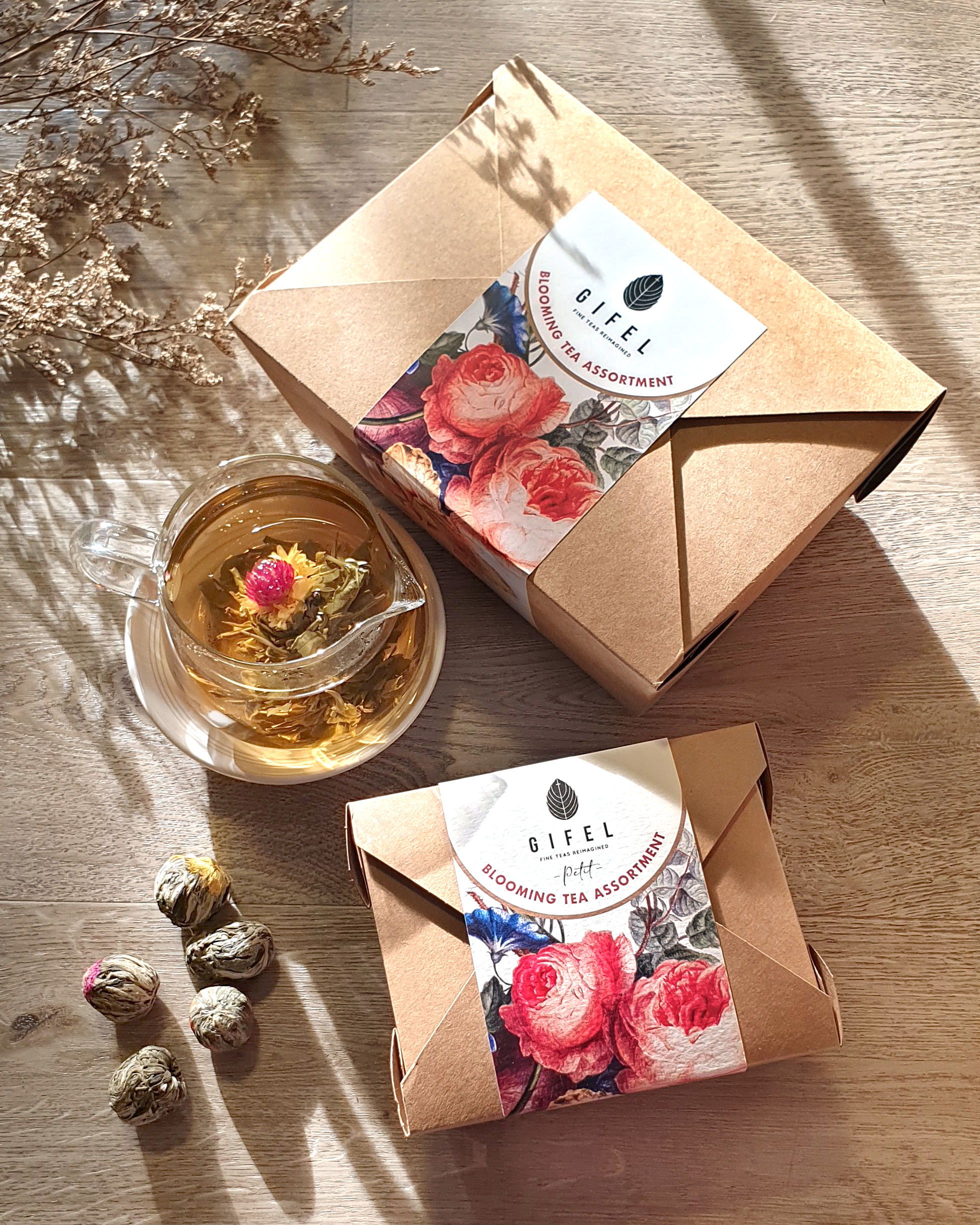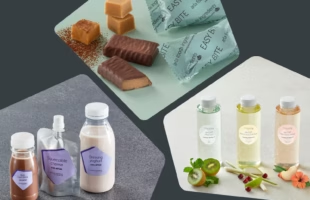
Courtesy of Dreiheit House
By Cath Isabedra
Specialty teas, anyone?
Specialty teas are a unique and diverse tea category, becoming increasingly popular among consumers. These teas are often made from high-quality ingredients, blended with unique flavors, and sold in small batches. They offer tea drinkers a chance to explore new and exciting flavor profiles and indulge in the experience of a genuinely handcrafted beverage.
We spoke to Gigi Ng, Director of Dreiheit Group of Companies, about the rise of specialty teas and how the industry adapts to changing consumer preferences.
The shift in consumer preferences
The tea industry has seen a significant shift in consumer preferences and consumption habits over the last few years. An ever-growing variety of products is available, from traditional black tea to green, oolong, herbal, and other specialty teas.
As consumers become more health conscious and aware of the potential health benefits of different types of tea, they are increasingly looking for healthier options that fit into their lifestyles. This shift in consumer preferences has resulted in a surge in demand for specialty teas such as matcha, chai, and turmeric tea, to name a few.
Companies have responded to this trend by introducing new varieties of tea that cater to different tastes and needs.
Gigi believes that this demand isn’t short-lived, and it’s something that will inspire tea producers to innovate. “We expect premium and specialty teas will continue to stay at the forefront of consumers’ minds. In turn, these desires fuel the growing demand in the foodservice segment to expand their tea menu offerings and increase the demand in the retail segment to make available tea products in different flavour profiles to satisfy every consumer’s taste.”
While conserving the traditional tea industry is still top of mind for many organizations, the impact of consumer preferences cannot be ignored. Gigi shares, “As a company, we evolve and rethink the way we do innovation in balancing nutrition, taste, and profitability. We learn and look at how consumers today eat, shop, and engage with brands and the new expectations they have from brands.”
She adds, “At Dreiheit House, we blend and process high-quality fresh tea leaves and turn them into innovative beverages and products. We use good-grade teas for blending with dried botanical ingredients like flowers, fruits, herbs, and spices that offer great health benefits alongside great flavour. The varied flavours extracted from teas are a viable alternative to wine and alcoholic beverages in food pairing, especially when served in different temperatures.”
On plant-based alternatives and the tea industry
One of the more noticeable consumer trends is the preference for plant-based alternatives, and it’s obvious to expect that tea would be at the center stage of all this. But innovation should be a game-changer. It’s no longer enough to present new flavours.
Dreiheit, for example, took it a step further.
During the FHA HoReCa 2022, where I met Gigi, their brand, Gifel Tea™was engaged by MilkLab to develop a whole new drink–both alcoholic and non-alcoholic tea-based recipes using plant-based milk.
“Our tea innovations with plant-based milk are very well received in terms of flavours, mouthfeel, and overall liking by the hospitality trade and media, and consumers when we launched the recipes at select HoReCa in Singapore, followed by Hong Kong and Macau. For non-alcoholic beverages, we compressed Gifel Tea™ Black Tea Cocoa at 75°C, topped it with cold foam oat milk, and garnished it with the tea leaves for a nose experience. We served our Strawberry Cream with raspberry, apple, and oat milk and introduced Yuan Yang Chendol with coconut milk. For alcoholic beverages, we infused our silver award-winning Singapore Dream with whiskey shaken with lemon juice, almond, and oat milk.”
Traditional specialty teas: a dying industry?
While the consumption of traditional tea may be declining in some parts of the world, there is still a strong demand for high-quality specialty teas.
One of the main challenges facing the traditional tea industry is competition from other beverages. In many countries, consumers are turning to coffee, soft drinks, and energy drinks, which are more convenient and appealing to younger generations.
Another challenge is the rise of tea bags and ready-to-drink tea products, which are often marketed as more convenient and more accessible to use than loose-leaf tea. These products have been successful in many markets, but they also tend to offer lower-quality tea blends and can contribute to the commodification of the tea industry.
However, despite these challenges, there is still a strong market for traditional tea, particularly in countries like China, India, and Japan, where tea is an integral part of the culture. There is also growing interest in specialty and artisanal teas, which can command high prices and appeal to a more discerning consumer base.
Gigi explains, “Specialty tea shops have become increasingly popular as consumers seek out unique and high-quality tea blends with new experiences that provide them a deeper level of engagement from sensory to emotional to thinking to action and association experiences. These shops often feature various teas, including rare and exotic varieties. In today’s rush through life, these spaces remind us to take time for ourselves and focus on the relaxing rituals of the brew and reconnect with ourselves.”
She furthers, “We believe traditional tea ceremonies, traditions, and cultures can be restored through specialty tea shops. We witnessed certain tea traditions gradually fading away, for example Chanoyu, which is the art of preparing and serving matcha. More than just tea, chanoyu practitioners must know about kimono, flower arrangement, calligraphy, ceramics, and many other Japanese arts that contribute to the tea ceremony.”
But hope is not lost. There are still many ways to keep the tradition alive while welcoming modern tea practices–only if companies are willing to address these challenges.
“We directly work with private, family-owned tea estates to supply high-quality single-origin, small-batch teas to these specialty tea shops,” Gigi shares. “Often, we will organize tea appreciation workshops to establish a human connection with the consumers through tea.”
“We are on a mission to change the world, one cup at a time. Every cup fill another.”
The growing market of tea consumption
The misconception that tea drinkers are mostly older is common but is not entirely accurate. While it is true that tea has traditionally been associated with older generations and specific cultures, the reality is that tea consumption is becoming more diverse and is popular among a wide range of age groups.
In recent years, there has been a growing interest in specialty and artisanal teas, attracting younger consumers interested in trying new and unique blends. In addition, many health-conscious consumers have turned to tea as a healthier alternative to sugary drinks, contributing to tea’s popularity among younger generations.
Social media and digital marketing have played a significant role in increasing the popularity of tea among younger generations. Influencers and bloggers often promote tea as part of a healthy and holistic lifestyle, which has helped create a new generation of tea drinkers.
Furthermore, tea companies have recognized the changing demographics of tea drinkers and are marketing their products to a younger audience. They are creating new blends, packaging their products in more modern, eye-catching designs, and utilizing social media platforms to reach younger consumers.
“Yes, the demographic of people buying tea has definitely changed, and the millennials are tea drinkers! According to YouGov research, they are the first generation to have equal preference for tea and coffee. They seek immersive experiences, something that is already done well by the coffee companies and is now a growing trend in the tea industry too.”
And it goes beyond demographics. When looking at the geographic landscape of tea consumption, it’s evident that there’s a worldwide impact.
“Introducing premium and unique tea blends in different fashions drives notable growth in APAC, EMEA, and the Americas. Black, green, and herbal tisanes are the most preferred tea types with growing premium product varieties. Addressing the consumers’ need for quick and convenient tea drinks and sugar reduction continues to account for a large amount of launch activity in the APAC region,” Gigi explains.
What would it take to break ground in the Western world?
Gigi says, “With the improvement of consumers’ living standards, the sensory quality and health benefits of tea beverages are becoming more important as we see an increasing demand for healthy and organic tea around the world. We focus on developing new unique flavors, launching new varieties, and packaging innovations to compete in the market.”
Sustainable sourcing of specialty teas

Sustainable sourcing of tea is critical for ensuring the long-term viability of the tea industry, protecting the environment, and supporting the livelihoods of tea farmers and workers.
“Sustainable and ethically sourced tea is the right thing to do,” Gigi agrees.
“The key is to start. This isn’t a goal – it’s an ongoing process and progression.”
She shares, “It goes beyond traceability, transparency, and assurance. We need to build long-term relationships, creating value for every player across all levels of the supply chain and collaboratively building systems and processes to address complex industry-wide issues. This will also ensure farming remains a viable option for future generations.”
It’s something that Dreiheit House has advocated for years. Gigi shares that they directly work with tea growers known for their compliance with international standards, including UTZ, Rainforest Alliance, and Fairtrade, for ethically sourced tea from seed to cup.
“We only source teas that are 100% natural and do not contain artificial flavors, colors, fertilizers, preservatives, and GMOs, delivering an experience that makes life better for people and the planet. Currently, we are working towards a goal of making all of our teas organic by 2025.”
Embracing modern tea development and production
One area where modern tea development is making an impact is tea processing. Traditional tea processing methods can be time-consuming and labor-intensive, but modern technologies such as mechanized plucking and withering and machine-aided rolling and drying can significantly improve efficiency and reduce labor costs.
Modern technology is also being used to improve the quality and consistency of tea. For example, advanced sensory analysis tools can help tea tasters evaluate and grade teas more accurately, while digital tools and data analytics can help tea companies track and optimize the production and supply chain.
In addition to technology, modern tea development also involves innovation in product development and marketing. Tea companies are developing new blends and flavors to cater to changing consumer tastes. They use digital marketing and e-commerce platforms to reach new customers and expand their markets.
Modern tea development also emphasizes sustainability and social responsibility. Tea companies are adopting sustainable sourcing practices, reducing waste and carbon footprint, and investing in community development and welfare programs to create a positive impact in the communities where they operate.
“The technology landscape changes rapidly, impacting how we bring our products to the market and how we market. There are new ways of producing, distributing, and communicating with target markets.” Gigi adds, “We believe in the power of artificial intelligence and machine learning, particularly how it can be applied to create value across our platforms in saving costs, making work more efficient and service-oriented, developing and launching innovative new products with a higher success rate, and most importantly, delivering bespoke experiences for each individual consumer. The increased use of technology to automate and digitalise tea farming to consolidate financial and field-level records of complete plantation activity and supply chain management.”
She further explains, “This significantly cuts down on the entire activity’s costs and time consumption. The use of technology makes the processes more precise and accurate, which reduces the probability of mistakes and wastages, thereby bringing about ease in the process. Tea production technology aimed at modifying the chemical composition of the raw material in order to produce new taste and aroma compounds responsible for the taste, color, and aroma of the manufactured tea that the consumer so highly values.”
The tea industry and its future outlook
The tea industry, like many other industries, has been impacted by the COVID-19 pandemic. The pandemic has disrupted supply chains, caused shipping delays, and reduced market demand. However, the pandemic has also created new opportunities and trends in the tea industry.
One of the most significant impacts of the pandemic on the tea industry has been the shift towards online sales and e-commerce. With many consumers staying at home, online shopping has become more popular, and tea companies have had to adapt by developing e-commerce platforms and increasing their online marketing efforts.
Another trend during the pandemic is the increasing demand for functional teas, such as those that boost immunity, reduce stress, or promote relaxation. With the pandemic causing heightened anxiety and stress, consumers have been turning to tea to support their mental and physical health.
Gigi explains, “After a global pandemic, we expect to see consumers exercising spending caution, but we’re also seeing the return of specialty tea as an affordable luxury, creating opportunities for us to continue innovating new beverage concepts with innovations spanning the alcohol-alternative, low-alcohol and RTD alcohol categories.”
She adds, “Consumers mindfully allow themselves indulgences, choose healthy products, and opt for brands with a lower environmental impact. With financial pressure mounting, healthier beverages that can enhance mood, ease consumer’s stress with products that support mental well-being and sustaining energy will be on the rise.”
She further adds, “There is a rising sense of urgency in shifting to a low-carbon economy, based on low carbon emissions, pollution, and energy consumption. This is impacting individual lifestyle choices, with consumers accepting a greater level of personal responsibility to make carbon-conscious decisions. We looked at the importance of traceability and companies demonstrating tangible actions to reduce their impact on the planet, from packaging to sourcing strategies.”
Despite the challenges posed by the pandemic, the tea industry has shown resilience and adaptability and is expected to grow in the coming years. Emerging markets such as China, India, and Indonesia are expected to be key growth drivers, while the trend toward premium and specialty teas will likely continue.
In addition, the growing awareness of the health benefits of tea, combined with the increasing demand for sustainable and ethical products, is likely to create new opportunities for the tea industry. Tea companies that can innovate and adapt to changing consumer preferences and market trends are likely to be the most successful in the future.
Gigi shares, “I believe the future of tea lies in the focus on meeting consumers’ needs for ethical, functional health benefits and innovation in teas. Tea made with superfood ingredients blends with immune-boosting properties, or targeted options focusing on specific health concerns will become popular.”
“We will get to see an increased interest in holistic tea that is designed for harmonising the body and mind by harnessing the power of ancient wisdom as tea is now a lifestyle choice, gaining strength from the powerful growing trends in health-focused living like yoga, fitness tracking, sleep calculation and eating hyper-local produce. We will be prioritizing products and blends that address mental health concerns. If done effectively, the mindfulness space will be the most dynamic in the global tea industry for years to come,” Gigi concludes.
With insights from Gigi Ng, Director, Dreiheit Group of Companies
Dreiheit Group of Companies consists of Dreiheit House International Pte Ltd, Dreiheit House Enterprise (Malaysia), Kokuhaku Pte Ltd, and Gifel Gourmande Pte Ltd.
Gigi hails from a family of entrepreneurs and philanthropists. Gigi believes in the law of attraction and has proven that hard work, passion, and creativity continue. After working with many different regions overseas for many years and experiencing tea in many cultures and ways, she became fascinated by tea and its healing, ritualistic and social benefits. She loves how it is consumed in different ways in different places and finds the diversity of tastes intriguing. Gigi travels the globe visiting tea regions, searching for unique teas and authentic tea experiences. She is available for professional tea training, consultancy, presentations, and blending. Accomplishments 2013 to present Certified Tea Judge of the World Tea Championship, by the World Tea Forum Secretariat 2017 Certified Tea Judge of Tea Masters Cup Singapore, by Tea Masters Cup 2019 Certified Cocktail Judge of 1883 Drink Designer Contest 2019 Edition Champion Founding Committee Member of Specialty Tea Association Singapore.
This story first came out in “Brewing Up the F&B Industry With a Burst of Flavors and Colors.”







